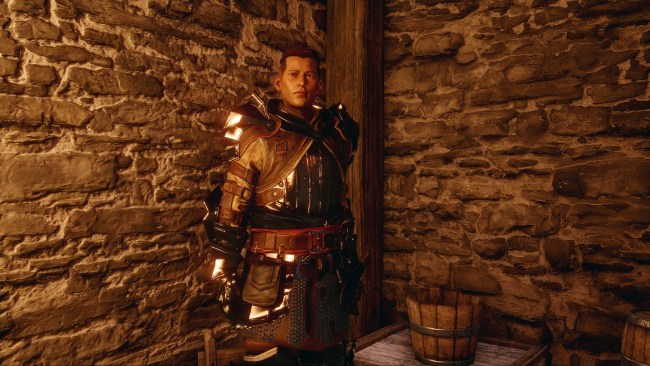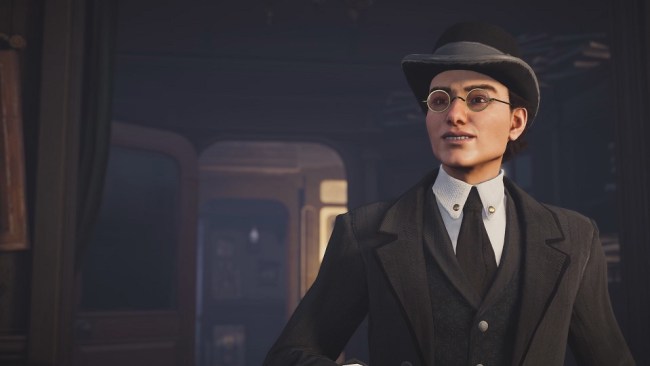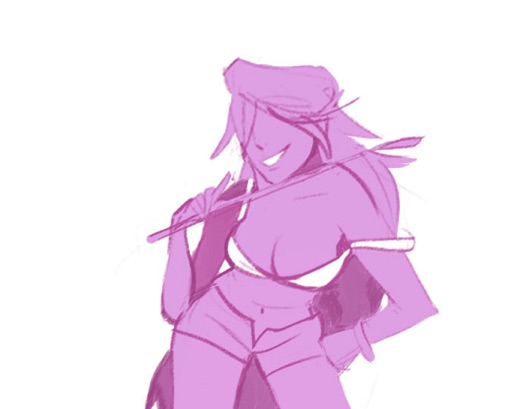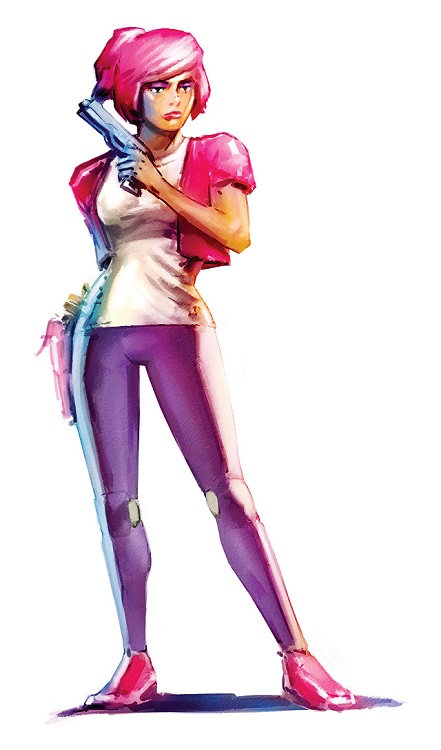Where’s the Love? How the Gaming Industry Avoids Creating Trans Romance Partners
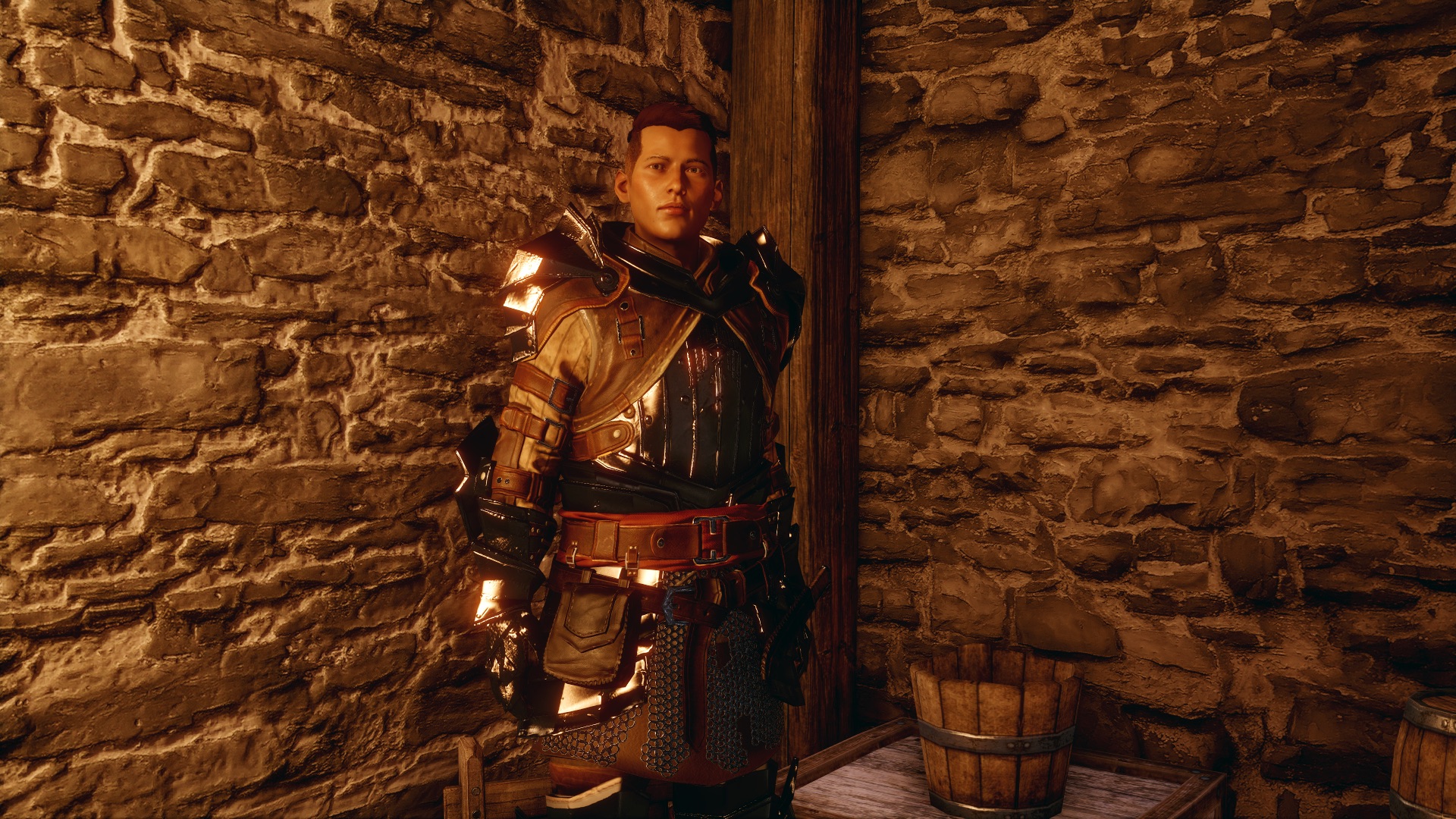
What does it mean to be a transgender character in video gaming? It’s difficult to say. Most trans characters are outliers, showcased to the player as an anomaly in a cisgender world. Those who do appear tend to inadvertently face scrutiny from bigots—as is the case in BioWare’s inclusion of Krem in Dragon Age: Inquisition, and Mizhena’s characterization in Baldur’s Gate: Siege of Dragonspear. For this very reason, it’s all the more important for the gaming industry to embrace trans voices in gaming—transphobes and exclusionary players share a community with trans players, and they need to get used to it.
Of course, it’s rare that trans men or women are given the opportunity to become complex, nuanced, and three-dimensional characters, so when a game touches on the lives of trans people, it’s often a shock. Rarely does the industry feature the intricate storylines that are the cornerstones of such games as Anna Anthropy’s Dys4ia, merritt kopas’s Lim, or Arielle Grimes’s Broken Folx. Touching on transness through the alternative community’s design mechanics, one quickly sees how the mainstream industry shies away from trans experiences and stories, and this is especially the case for games with romantic plotlines.
Romance writing is a difficult feat in any video game. Questions of interpersonal intimacy—or the ways in which characters interact with each other, care for one another, and fall in (and out) of love together—require complicated and nuanced personalities. In other words, a good writer feels the chemistry between the characters they are writing and develops a romantic and sexual relationship that feels plausible for the reader.
By this same token, trans romances rely on writers’ ability to think about trans men and women as dynamic and complicated individuals. After all, queer and trans life can be messy, and trans people often deal with a wide range of problems in their lives. While no two trans people share the same life experiences, there are common concerns that flow throughout our lives. Questions of belonging, financial uncertainty, and sexual alienation can bring two trans women together. In the same regard, a cisgender and transgender couple may create a close bond with one another over similar problems of belonging, self-actualization, or self-discovery. Trans men and women date their partners for a variety of reasons, and strong writers consider these aspects while creating their characters.
But the gaming industry has such a lackluster relationship with trans characters as is. Most of the trans women and men found in gaming take on simplistic supporting roles that are largely defined by their outlier status as trans people.
Take Mizhena in Beamdog’s latest Baldur’s Gate expansion: Mizhena is a transgender woman who serves as a cleric of Tempus. During the game, the player can ask her questions about her name, which opens up a dialogue tree about her transitioning at a young age. Her status as a trans woman is clear and explicit, and it’s certainly hard to miss.
But there isn’t much substance to Mizhena. In fact, one might argue her portrayal is unrealistic. After all, very few trans women openly discuss the family history behind their transitioning. Conversations on transitioning are extremely personal and can bring up the pain that comes from experiencing gender dysphoria during childhood. For this very reason, many trans women prefer not to talk about their transitioning unless they are confiding in a close friend or lover—not a stranger stopping by the area.
Of course, this paves the way for another issue: Mizhena isn’t treated as a woman with a personal life. No, her characterization revolves around her transitioning narrative. By relegating her to an NPC role that throws transgender issues into the spotlight for a couple seconds, she isn’t given the complexity that real trans women have. What does Mizhena do for fun? What are her passions and hobbies? What are her strengths, weaknesses, and tragic flaws? These are fundamental questions for not just writing any romantic storyline, but writing rich characters as well. Yet all this is missing from Mizhena. Her representation is flat, and, for that very reason, she hardly feels realistic.
Granted, Baldur’s Gate isn’t the only game that thrusts trans characters into constrained roles. Assassin’s Creed: Syndicate also struggles with dynamic character writing for trans men.
Ned Wynert is Assassin’s Creed‘s first transgender character. He hails from New York City and originally came to London as a businessman—and a thief. He’s certainly not portrayed as a fragile character. In fact, he’s quite a powerful figure in London and runs a bustling criminal operation in Southwark. To their credit, Ubisoft directly avoided creating a trans character whose life experiences are solely defined by his transitioning. Rather, his criminal enterprise speaks for his power in the game, and he comes off as an interesting character with enough charisma to build discipline and loyalty among his crew.
But once again, Ned is cast as nothing short of a supporting character. As lead writer Jeffrey Yohalem discusses, Ned originally had several side missions planned, which were later cut due to Syndicate’s production timeline. This relegates Ned to a relatively small role, one where the various shades of his personality are not fully developed, only examined.
Without giving characters such as Ned and Mizhena the opportunity to explore their lives in detail, discussions on their sexuality—or lack thereof—are difficult to create. In fact, Ned and Mizhena’s romantic lives are downright unknown to the player. The supporting character role leaves little room for their games to explore their personal lives in detail. Even with the best intentions during development, their transness becomes an overarching trait, and their romantic and sexual relationships remain relegated to fan speculation.
Granted, not every character has to have a romantic or sexual relationship with another character. Romantic plotlines can break a narrative’s structure if they’re forced. The problem in gaming, however, is that there are absolutely zero trans characters that are romance-able for the player, nor are there many trans men or women characters who have romantic relationships in gaming, either. It’s fine if an individual game doesn’t have the narrative structure to support romantic relationships with trans folks, sure, but when this becomes a popular trend, then something needs to change.
After all, the games industry pales in comparison to the stories found in today’s trans literature renaissance. In Topside Press Editor Casey Plett’s book, A Safe Girl to Love, for example, her short stories focus on the feelings and experiences that trans women have while building sexual and romantic relationships with others. Her characters face strained pasts, awkward encounters with cisgender partners, romantic and sexual frustrations, and melancholy dates that highlight just how isolated trans people feel in a society that rigidly enforces a cisgender view of gender. In other words, her characters’ romantic and sexual experiences are vital to their characterization, with all the positive and negative experiences that entails. For trans men and women, this is incredibly important, because our romantic and sexual experiences are rarely discussed in media. Even today, very few cisgender men and women are aware of the struggles we face while dating.
So how can the gaming industry fix this problem? First and foremost, designing realistic representation is an incredibly difficult undertaking—one that requires expert hands—so why leave a discussion on trans life with a writer who doesn’t know what it’s like to be trans or has very little exposure to trans men and women? Getting trans men and women into writing teams will lead to more realistic character development, interesting characters, and stronger script drafts during a game’s initial production stages. At the very least, studios need to consult with trans writers, preferably ones with strong writing experience. This is actually becoming more common in film and television, which leaves one to wonder why gaming hasn’t jumped on board.
From there, it’s also important for developers to become more conscious of the various gender choices that players have in choosing a romance partner. It’s shockingly common to have a role-playing game where romance options are largely relegated to straight cisgender white men and women. Developers that aren’t thinking about diversity simply won’t create diverse character rosters, and romantic partners are no different. Developers that set aside room for representation will create it, so studios that are serious about trans rep need to get serious about diversity, as well as intersectionality.
Of course, writing trans characters themselves can be tricky. It often feels as if trans men and women across the West are still figuring out how to talk about trans life—what narrative structures should we use? Which ones should we avoid? How do we discuss transness in a way that interweaves our life experiences with the stories that our characters want to share? A major way to start writing a trans romance character, then, is to think about a character’s life outside of their transness. What is their personality like? What story do they have to share? What do they look for in a partner and why? Being a trans person is about more than just gender dysphoria—it’s also about being a person. Once the individual behind the identity is understood, then a trans character’s role in their romantic, sexual, and interpersonal relationships will become clearer.
Lastly, writing a trans romance partner is actually not all that different from writing a cisgender one. Most of the same basic considerations of relationship chemistry and personal behavior come into play. The question, rather, is how transness may complicate or impact the relationships that a trans man or woman will have with their partners. Where are they in their transitioning timeline? What kind of area do they live in, and how does that impact their openness (or lack thereof) about being trans? Is a character self-conscious of their body, or do they largely avoid sexual contact? These questions are certainly not the end point for writing a trans character, but they’re a good launch pad for both creating complicated romantic relationships and exploring issues of body image and consent in sexual and romantic relationships.
Gaming is a unique medium. Unlike music, film, or literature, it calls for direct interaction from its player. Romantic storylines are very powerful for this reason, because they can give the gaming community an unprecedented look at the ways in which a protagonist’s partner thinks, feels, and acts based on their life story. The question, then, is how to create characters that are tactfully and intelligently written. The gaming industry’s writers are certainly up to the task for cisgender partners. Let’s hope they take up their creed and begin creating trans ones, too.
Ana Valens is a freelance games critic and Advisor for FemHype. Her work focuses on the relationships that players build with their favorite characters and worlds. Her writing can be seen on ZEAL, Kill Screen, The Toast, and Bitch Media. She is currently working on a visual novel about body horror and emotional trauma. For more of her writing, check out her Twitter @SpaceDoctorPhD.
Ceyda Farhi sketch courtesy of Robyn Timmons.
—The Mary Sue has a strict comment policy that forbids, but is not limited to, personal insults toward anyone, hate speech, and trolling.—
Follow The Mary Sue on Twitter, Facebook, Tumblr, Pinterest, & Google+.
Have a tip we should know? [email protected]
